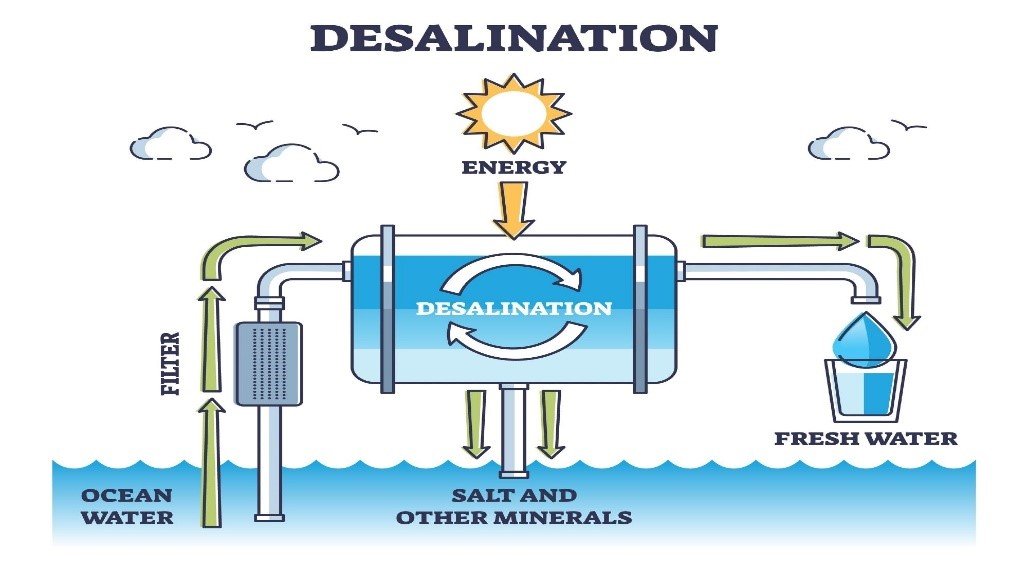DESALINATION

Methods of Desalination:
- Distillation: In this process, seawater is heated to create water vapor, which is then condensed into freshwater. This method is energy-intensive and less common compared to other techniques.
- Reverse Osmosis: Reverse osmosis is the most widely used desalination method. It involves using a semipermeable membrane to separate salt and impurities from water. Pressure is applied to force water through the membrane, leaving behind concentrated brine and producing freshwater.
- A desalination plant turns salt water into water that is fit to drink.
- The most commonly used technology used for the process is reverse osmosis where an external pressure is applied to push solvents from an area of high-solute concentration to an area of low-solute concentration through a membrane.
- The microscopic pores in the membranes allow water molecules through but leave salt and most other impurities behind, releasing clean water from the other side. These plants are mostly set up in areas that have access to sea water
- Desalination has largely been limited to affluent countries in the Middle East and has recently started making inroads in parts of the United States and Australia. In India, Tamil Nadu has been the pioneer in using this technology, setting up two desalination plants near Chennai in 2010 and then 2013
- The two plants supply 100 million litres a day (MLD) each to Chennai.
- Two more plants are expected to be set up in Chennai.
- The other states that have proposed these plants are Gujarat, which has announced to set up a 100 MLD RO plant at the Jodiya coast in Jamnagar district.
- There are also proposals to set up desalination plants in Dwarka, Kutch, Dahej, Somnath, Bhavnagar and Pipavav, which are all coastal areas in Gujarat. Andhra Pradesh, too, has plans of setting up a plant.
Here are some of the primary reasons why desalination plants are needed:
-
Water Scarcity: In arid and semi-arid regions, as well as in coastal areas with limited access to freshwater sources like rivers and lakes, water scarcity is a constant challenge. Desalination plants can provide a consistent and independent source of freshwater that is not reliant on rainfall or surface water availability.
-
Population Growth: Rapid population growth in many parts of the world has put increased pressure on existing freshwater resources. Desalination can help meet the growing demand for clean drinking water and support the needs of expanding urban areas.
-
Droughts and Climate Change: Climate change has led to more frequent and severe droughts in various regions. Desalination plants can act as a drought-resistant water source, ensuring a stable water supply during extended periods of water shortage.
-
Agriculture and Irrigation: Agriculture is a major consumer of freshwater. Desalinated water can be used for irrigation in agriculture, reducing the strain on traditional freshwater sources and helping to sustain food production.
Challenges and Concerns:
- Energy Consumption: Desalination processes, particularly reverse osmosis, require significant amounts of energy, which can be costly and environmentally impactful.
- Environmental Impact: Disposal of concentrated brine back into the ocean can harm marine ecosystems, and the intake of marine organisms during the desalination process can have ecological consequences.
- Cost: Desalinated water is often more expensive than water from traditional sources, making it economically challenging for some regions.
- Infrastructure: Building and maintaining desalination plants require substantial infrastructure investments




